German rocket artillery during the war. 2-Part I
In February, the 1943 of the German armed forces adopted the 300-mm reactive high-explosive mine 30 cm Wurfkorper Wurfgranate Spreng (30 cm WK.Spr.42), taking into account the experience of combat use of 280 / 320-mm rocket launchers. This projectile with a mass of 127 kg and a length of 1248 mm had a range of 4550 m, i.e. twice as large as the previous shells.
The 300-mm shells were supposed to be fired from the newly developed six-charge launcher 30, see Nebelwerfer 42 (30 cm WK Spr. 42). Since February, 1943, the division of these units passed military tests, in July of the same year, the installation was adopted. The mass of the installation is 1100 kg, the largest angle of elevation is 45 degrees, the angle of horizontal shelling is 22,5 degrees.
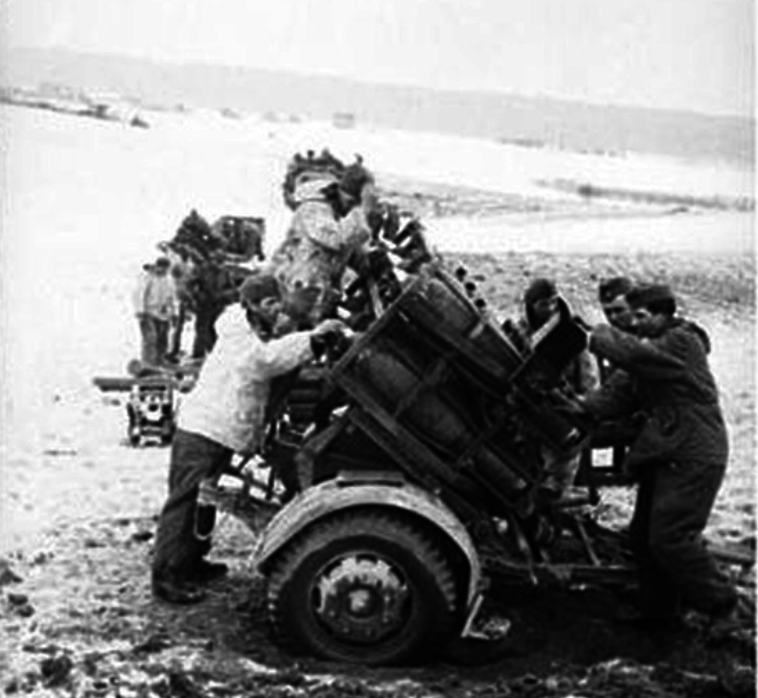
Launchers 30 cm WK Spr. 42 were in service with heavy battalions of Wehrmacht rocket artillery brigades. They were used in hostilities in both the Eastern and Western fronts until the end of hostilities.
For the production of a salvo from the 30 cm Nebelwerfer installation, the 42 required just 10 seconds, and after two and a half minutes the installation could have given another volley. Since, as a rule, much more time was required for the enemy to retaliate, the battalions of such installations usually fired two volleys and then left their firing positions. The presence of a sprung course at the carriages allowed the installation to be towed at speeds up to 30 km / h.
In the future, this installation was replaced in the production of a more advanced launcher 30 cm Raketenwerfer 56. In total, 380 units 30 cm Nebe Svyerfer 42 were released during production. From the start of production of 300-mm rockets in 1943, it lasted almost until the very end of the war, in total more than 200 000 units were produced.
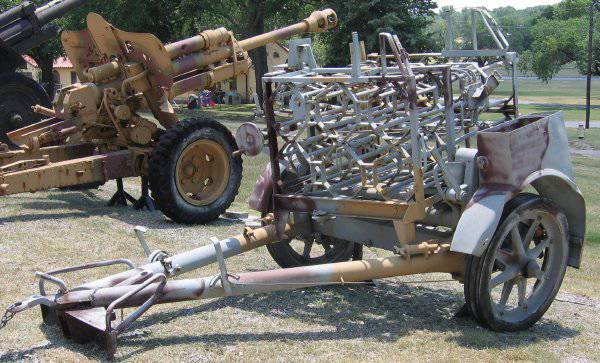
The 30 cm Raketenwerfer 56 launcher was mounted on a converted gun carriage from the 50-mm 5 cm PaK 38 anti-tank gun. Vertical guidance angle from -3 to + 45 degrees, horizontally - 22 degrees. Using special inserts from 30 cm Raketenwerfer 56, it was possible to fire 150-mm 15 shells, see Wurfgranate 41, which significantly increased the flexibility of MLRS. There was also the possibility of shooting 300-mm projectiles from the ground. Ammunition was charged in 280 / 320-mm reactive mine closures. Obturation was achieved using special inserts. The mass of the rocket launcher reached 738 kg.
Of the total 1300 30 cm Nebe Svyerfer 42 and 30 cm Raketenwerfer 56 installations, which were actively used on all fronts until the end of hostilities, no more than a third of the initial number was lost in battles.
The most successful of all German towed MLRS was the five-barrel 210-mm 21cm Nebelwerfer 42 on the Pak 35 / 36 rifle wheeled cannon. Used for shooting 21 cm Wurfgranate missiles. The remaining characteristics of the 21cm Nebelwerfer 42 remained identical to the PU used to launch 150-mm rockets. Combat weight 1100 kg, weight in the stowed position - up to 605 kg. The shells were fired alternately with the smallest interval in 1,5 seconds, the salvo was fired during 8 seconds, the reloading of the mortar took about 1,5 minutes. During the operation of the jet engine (1,8 seconds) the PC accelerated to the speed of 320 m / s, which ensured the flight range in 7850 meters.
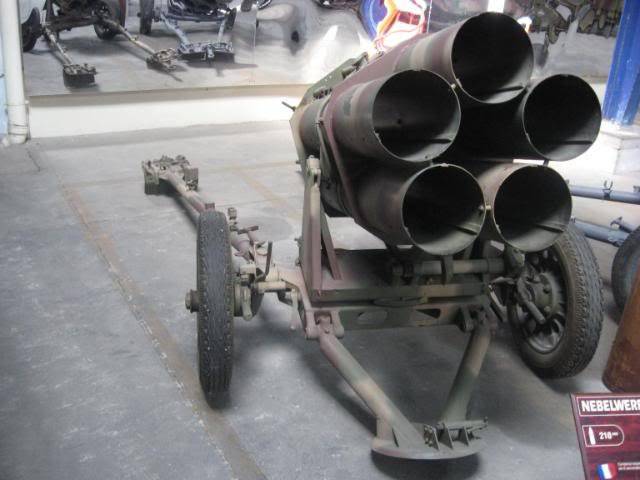
The high-explosive missile 21cm Wurfgranate 42 Spreng was first used at the front in the 1943 year. She was highly technological in production and had a good ballistic form. 18 kg of jet fuel (7 tubular lumps of gunpowder) was placed in a stamped combustion chamber. The neck of the chamber was screwed down with a perforated bottom with 22 inclined nozzles (angle of inclination 16 degrees) and a small central hole into which an electric fuse was inserted.
The body of the warhead was made by hot stamping from 5-mm steel sheet. It was filled with molten trinitrotoluene or amatol mass 28,6 kg, then screwed onto the thread in front of the combustion chamber. A shock fuse was screwed to the front of the warhead. The required ballistic form of the missile was provided with a shell fitted on the front of the warhead.
From the installation of 21 cm Nebelwerfer 42 there was the possibility of firing single projectiles, which facilitated the sighting. Also with the help of special inserts it was possible to fire 150-mm projectiles from six-barreled 15 cm Nebelwerfer 41.
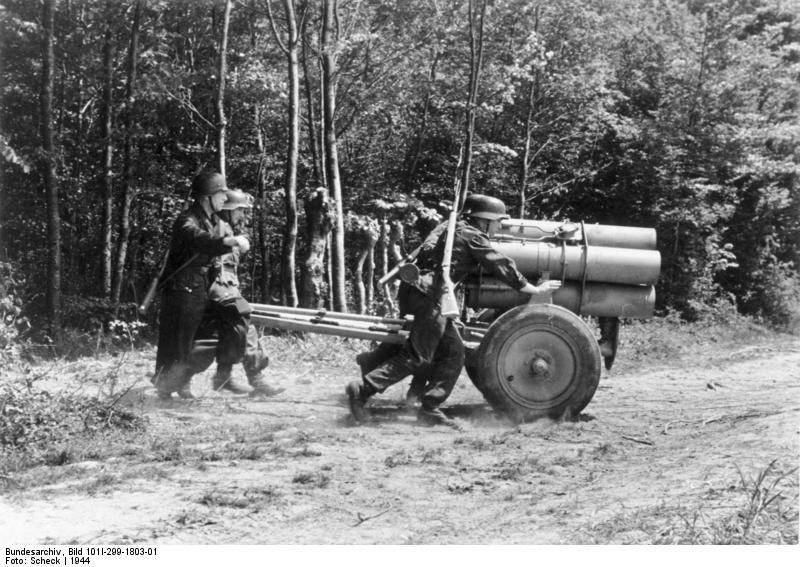
If necessary, 21 cm Nebelwerfer 42 could be transported over short distances by force of calculation. These installations were actively used by the Germans until the last days of the war. In total, almost 1600 towed MLRS of this type were produced.
In 1942, the Germans managed to capture the Soviet BM-13 rocket artillery machine and missiles to it. Contrary to the widespread Soviet myth, rocket artillery machines with rail-type guides and M-13 missiles themselves did not represent a special secret. They were very simple in the device, technological and inexpensive to manufacture.
The secret was the production technology of powder checkers for jet engines of M-8 and M-13 projectiles. It was necessary to make checkers of smokeless nitroglycerin powder, which would provide uniform traction, and would not have cracks and cavities, the presence of which could lead to uncontrolled burning processes of jet fuel. The diameter of the powder checkers in Soviet missiles was equal to 24-mm. Their size and determined the two main caliber missiles - 82 and 132-mm. German specialists did not succeed in reproducing the technology for the production of powder checkers for engines of Soviet missiles, and they had to develop their own rocket fuel formulations.
At the end of 1943, Czech engineers at the Ceska Zbrojovka plant in Brno created their own version of the Soviet 82-mm M-8 missile.
The 80-mm rocket had characteristics close to its prototype, but the firing accuracy due to the rotation reported by the stabilizers (set at an angle to the body of the projectile) was higher than that of the Soviet model. The electric igniter was moved to one of the leading belts, which made the rocket more reliable. The missile, designated the 8 cm Wurfgranate Spreng, was more successful than its Soviet prototype.
A 48th launcher was also copied, which was unusual for the Germans of the rail type, called: 8 cm Raketen-Vielfachwerfer. 48 rocket launchers mounted on a trophy French chassis tanks SOMUA S35. The guides were mounted instead of the removed tank tower.
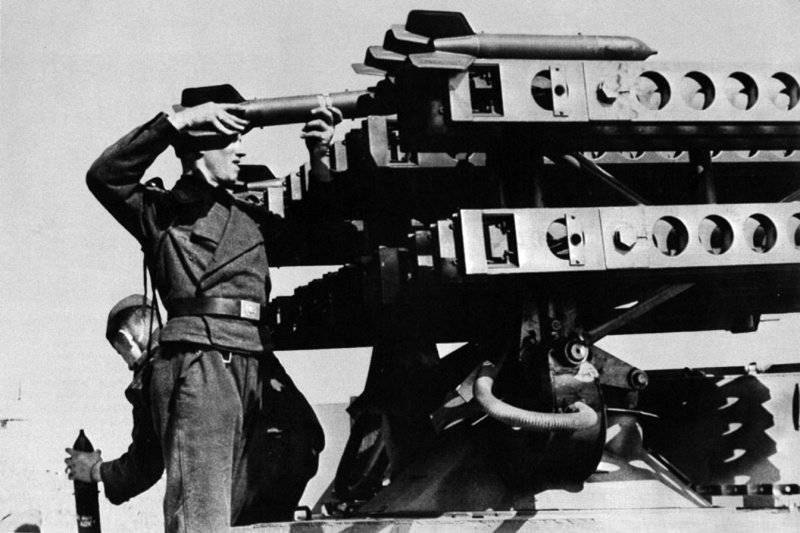
The lightweight version of the system - 24 guides, placed in two tiers, were installed on the basis of various semi-tracked armored personnel carriers and on a specially designed model, for which they used the base of the SOMUA MCG / MCL trophy French semi-tracked tractor. The installation received the designation 8 cm R-Vielfachwerfer auf m.ger.Zgkw S303 (f).
80-mm rocket launchers were used mainly in four-battery rocket artillery battalions, which were assigned to SS tank and motorized units.
Unlike the M-8 missile, the German copy of the M-13 has undergone great changes. To increase the fragmentation of the warhead, the caliber of the German version was increased to 150 mm. Manufacturing technology was significantly simplified, instead of screw connections, welding was used. Instead of powder checkers used granular jet fuel. Due to this, it was possible to achieve stabilization of pressure in the engine and reduce the eccentricity of thrust.
However, the matter did not come to combat use of these rockets, although the decision on their mass production was made.
Other types of missiles (lighting and agitation), as well as rockets, originally developed for the Air Force and Air Defense, were occasionally used at the front.
In addition to rockets, in Germany, active-jet missiles with increased firing range were created for large-caliber long-range guns. A jet engine placed in the body of such a projectile, began work on the trajectory some time after the projectile left the gun. Because of the rocket engine placed in the shell of the projectile, active-projectiles have a reduced explosive charge. The work of a jet engine on the trajectory negatively affects the dispersion of projectiles.
In October, the Wehrmacht 1944 adopted a heavy assault SAU - 38 cm RW61 auf Sturmmörser Tiger, known as "Sturmtigr." The "assault guns" were re-equipped from the Tiger heavy tanks, while the tank compartment and partly the frontal armor of the hull were converted, and the other units remained almost unchanged.
This heavy SPG was armed with an 380-mm Raketenwerfer 61 ship-borne jet bomb with a barrel in 5,4 caliber.
The bomb was firing rockets with a solid-fuel engine, stabilized in flight due to the rotation achieved by the oblique location of its engine nozzles, as well as the occurrence of projections on the rocket body into the canal cutting channels. The initial velocity of the rocket at the exit of the barrel was 300 m / s. The Raketen Sprenggranate high-explosive rocket weighing 351 kg contained 125 kg of TNT.
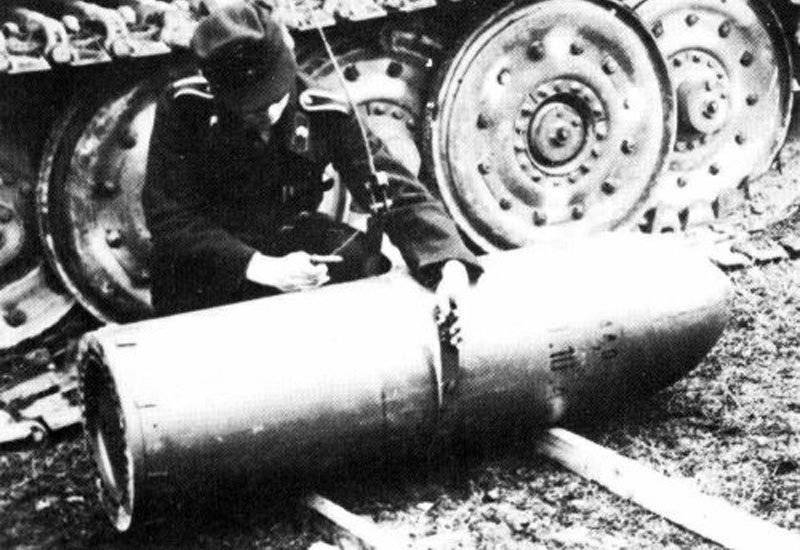
The firing range of this “jet monster” was within 5000 m, but in practice it was not fired any further than 1000 m.
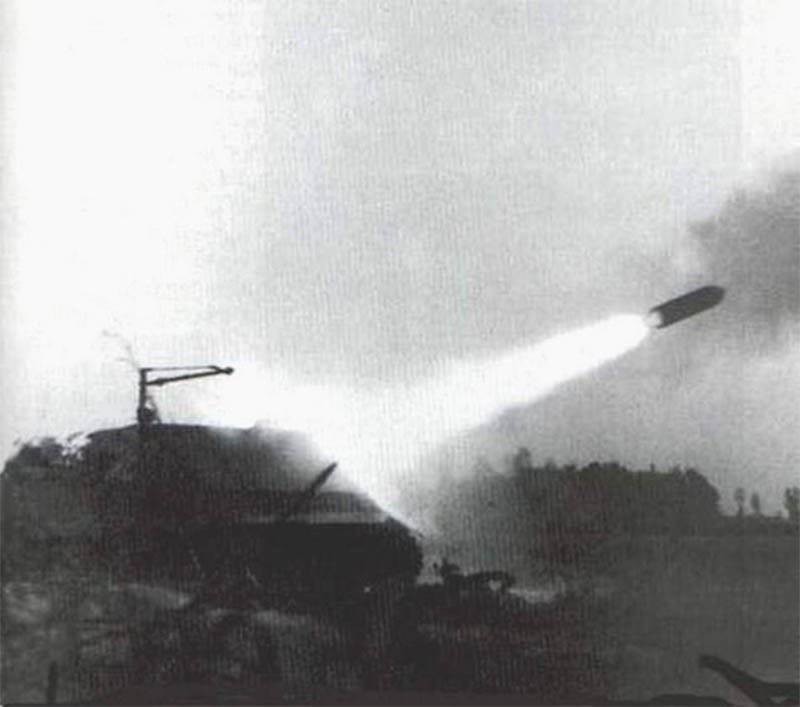
The “assault guns” were issued in the total number of 18 copies and had no influence on the course of the hostilities.
The Reneten-Sprenggranate 4831 long-range four-stage rocket created at the end of the war by the firm Rinten-Sprenggranate XNUMX stands out as well. It was the first, brought to mass production and adopted operational tactical missile.
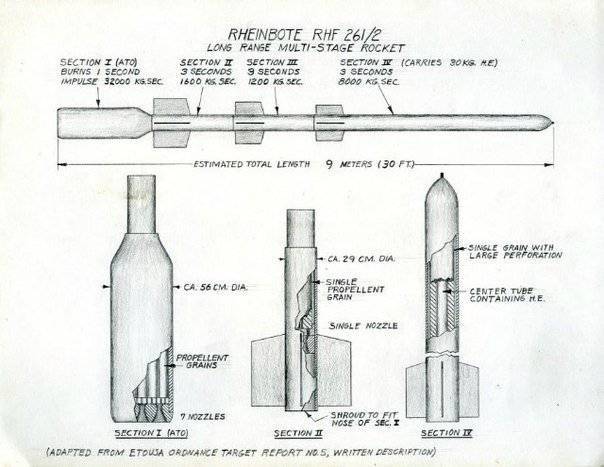
It was developed several variants of the rocket, which differed in range and weight of the warhead. A modification was adopted - RhZ6l / 9 with a warhead loaded with 40 kg of powerful explosives. As a result of an explosion in the soil of medium density, a crater was formed with a depth of approximately 1,5 m and a diameter of 4 m. An important advantage of the rocket was its simplicity and relatively low cost. It took only 132 man-hours to make one rocket.
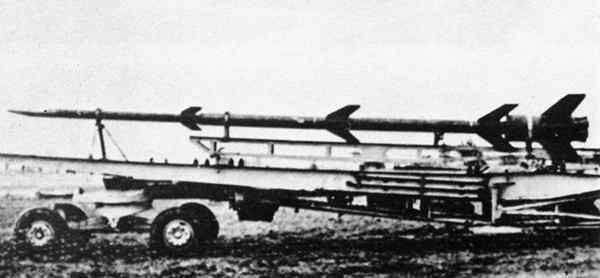
In the final version, the rocket had a length of 11 400 mm and weighed 1715 kg.
The diameter of the first stage was 535-mm, it was followed by two stages with a diameter of 268-mm, and the fourth combat carrier carrying a diameter of 190-mm. Solid fuel rocket engines of all four stages contained 585 kg of gunpowder and accelerated the rocket to 1600 m / s.
The rocket was launched from a mobile launcher at a distance of 200 km. Accuracy was low; dispersion relative to the aiming point exceeded 5 km.
The Reinbote missiles were armed with a specially formed 709 th separate artillery division with a staff of 460 soldiers and officers.
From December 1944 to mid-January 1945, the division conducted shelling of port facilities in Antwerp, through which the Anglo-American forces were supplied. It was launched about 70 missiles. However, this attack did not have a noticeable effect on the course of hostilities.
Analyzing the actions of the German rocket artillery in the course of the war, we can note the differences in tactics of use with the Soviet units of rocket artillery. German towed and self-propelled systems were much more often used for the destruction of individual targets and the provision of direct fire support. This can be explained by the fact that the accuracy of fire in the German systems due to the stabilization of the projectiles by rotation was very high: the coefficient of circular probable deviation did not exceed 0,025-0,0285 values from the maximum firing range.
At the same time, the Soviet MLRS, being more long-range, were used on a much larger scale for the destruction of area targets.
Many technical solutions, first used in German rocket launchers, were implemented in post-war MLRS adopted for service in different countries.
Based on:
http://forum.guns.ru/forummessage/42/73.html
http://ussrlife.blogspot.ru/2012/10/blog-post_3526.html
http://fs.nashaucheba.ru/docs/270/index-1543563.html
http://strangernn.livejournal.com/892595.html
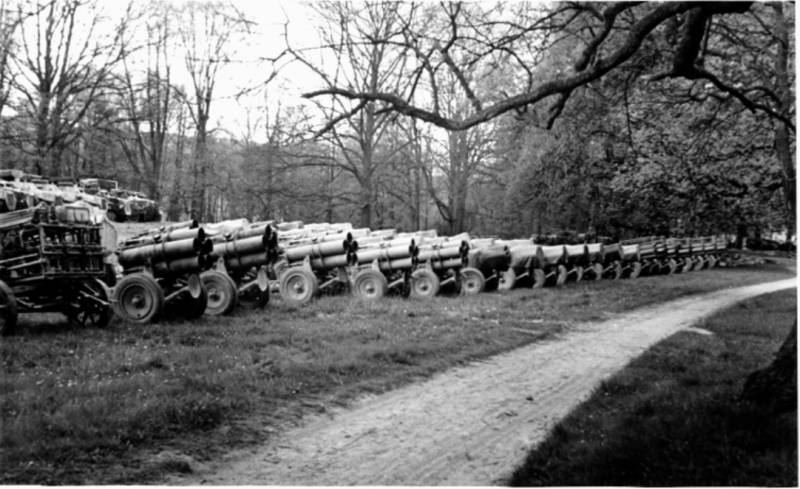
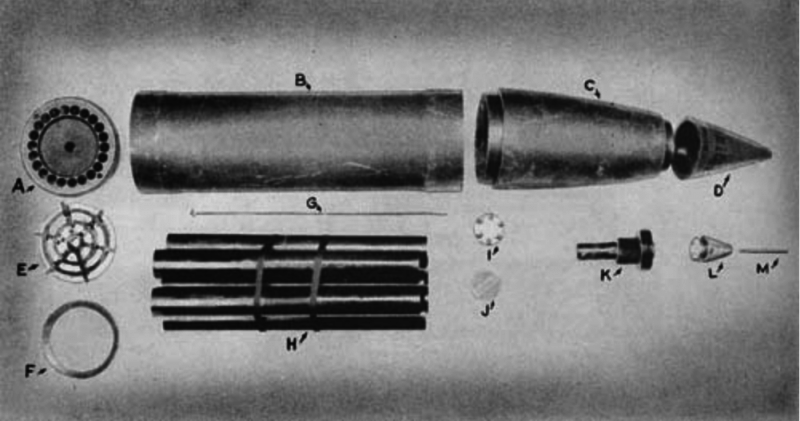
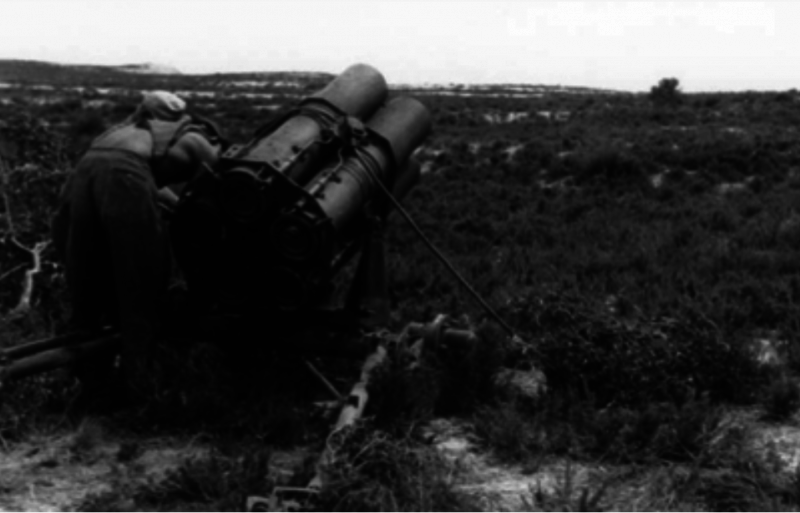
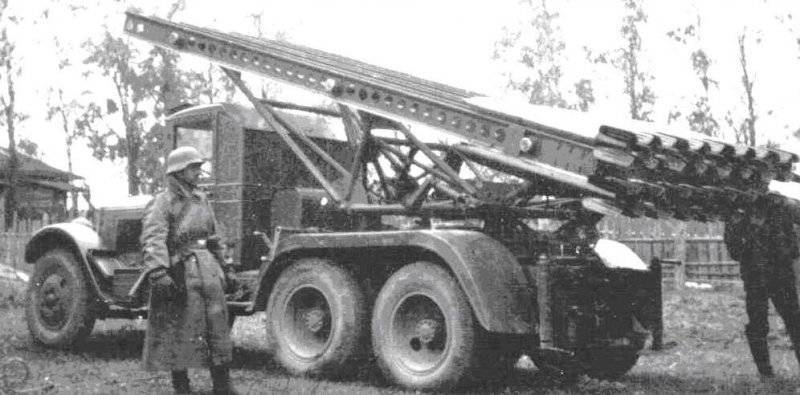
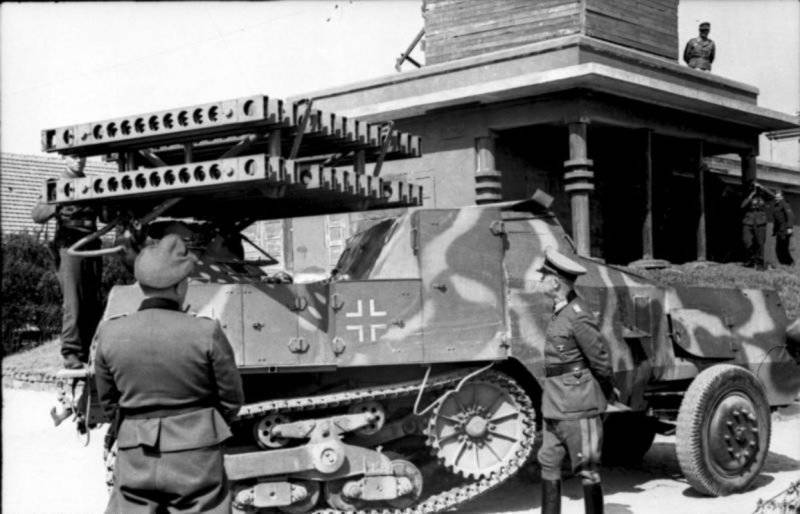

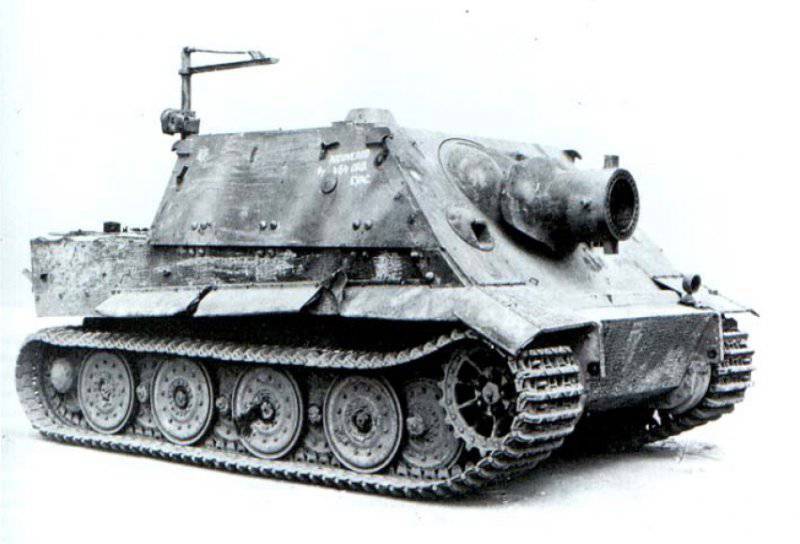
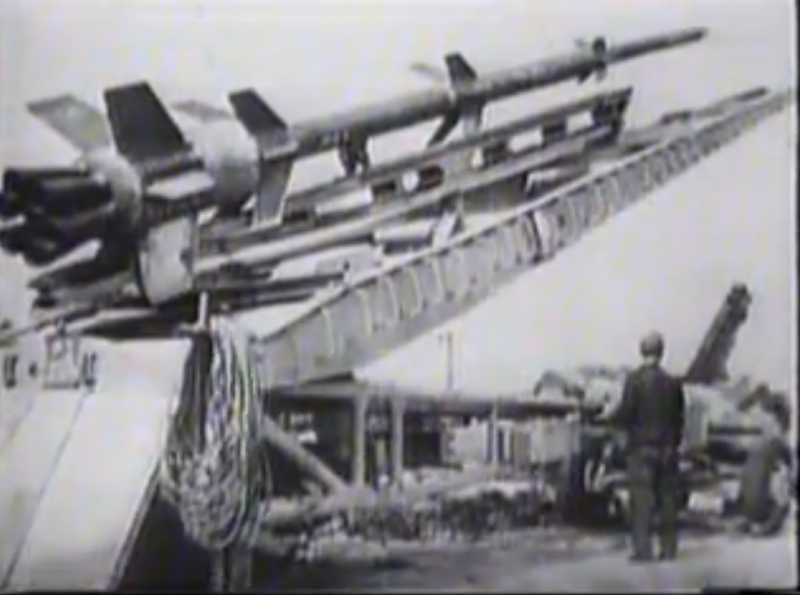
Information